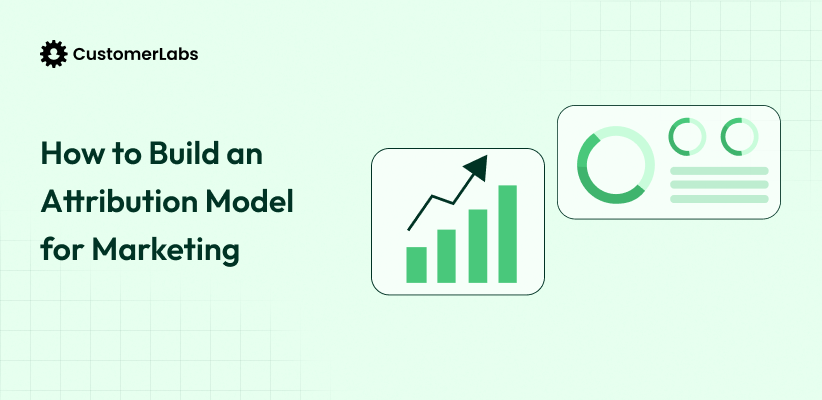Have you ever wondered why some of your marketing campaigns seem to perform well but don’t get the recognition they deserve? The issue often lies in how credit for conversions is assigned. Traditional models like first- or last-click attribution only tell part of the story, leaving out valuable insights from the rest of the customer journey. That’s where fractional attribution steps in.
In this blog, we’ll explore how fractional attribution works, the different types of models you can use, and how they provide a more accurate view of your marketing efforts.
What is Fractional Attribution?
Fractional attribution is a model that assigns credit for conversions across all the touchpoints a customer interacts with during their journey. Rather than giving all the credit to a single interaction, it measures the collective impact of each channel.
With fractional attribution, every touchpoint matters. Whether it’s the first ad that grabs attention or the final email that seals the deal, each interaction gets its fair share of credit. This approach helps businesses understand the true value of every marketing effort.
Fractional attribution provides a more balanced view than first- and last-click methods, which oversimplify the journey. It’s a smarter way to track performance, helping you optimize campaigns based on real influence.
Now that we know what fractional attribution is, let’s see how it actually works in practice.
How Fractional Attribution Works
Fractional attribution works by dividing credit for a conversion across multiple interactions in the customer’s journey. Instead of giving one touchpoint full credit, it breaks down the value of a conversion and assigns a portion to each relevant interaction. For example, if a user interacts with three different ads before converting, each ad gets a share of the credit based on its contribution.
This method looks at the entire conversion path, considering every point of interaction between the customer and the brand. It doesn’t just focus on the first or last touchpoint but evaluates each step to understand its role in driving the final action. This comprehensive approach helps marketers identify which touchpoints actually influence decisions.
Advantages Over First and Last-Touch Methods
Unlike single-touch models, fractional attribution provides a more balanced view. It avoids overemphasizing one interaction and instead highlights the collective impact of all touchpoints. This makes it fairer and more insightful, helping businesses understand their marketing efforts in a deeper, more meaningful way.
Understanding how fractional attribution works leads us to the different models used—each with its own approach to dividing credit. Moving forward, let’s understand the different types of fractional attribution models.
Types of Fractional Attribution Models
Fractional attribution uses different models to divide credit among touchpoints, each offering a unique way to track the customer journey. Let’s break them down.
1. Linear Model: Equal Credit to Each Touchpoint
The linear model assigns the same amount of credit to every touchpoint in a customer’s journey. It doesn’t prioritize any interaction over another, making it straightforward to implement. This model works well when you want to recognize all touchpoints equally, but it might overlook the varying influence of different interactions.
2. Time Decay Model: More Credit to Later Touchpoints
The time decay model gives more weight to interactions closer to the final conversion. It assumes that recent touchpoints have a greater influence on the customer’s decision than earlier ones. This approach works best for campaigns where the last stages of the journey are critical in driving conversions.
3. U-shaped Model: More Credit to Beginning and End Touchpoints
The U-shaped model emphasizes two key moments: the first touch that initiates the customer journey and the final interaction that seals the deal. The middle touchpoints are recognized but given less weight. This model is useful when both awareness and the final push are vital to the conversion process.
4. W-shaped Model: Includes Key Middle Touchpoints
Similar to the U-shaped model, the W-shaped model gives weight to the first and last touchpoints but also includes significant interactions in the middle, such as a form submission or a demo request. It’s ideal for businesses that value nurturing interactions in addition to the starting and ending points.
5. Custom Models: Tailored to Business-Specific Needs
Custom models allow businesses to design attribution strategies based on their unique goals and customer behaviors. If you have robust data on touchpoints, you can tweak the credit distribution to reflect your business priorities, ensuring that the model aligns with your specific reporting and optimization needs.
With all the different models out there, the question is: which one fits your needs best?
Choosing the Right Model
Choosing the right fractional attribution model is key to understanding which marketing efforts truly drive conversions and how to optimize your strategy.
1. Rules-Based vs Algorithmic Methodologies
Rules-based models, like linear or time decay, follow pre-set guidelines for dividing credit. They’re straightforward and easy to implement but may not capture the full complexity of user behavior. Algorithmic models, on the other hand, use machine learning to assign credit based on data patterns dynamically. These are ideal if you can access robust data and need precise insights.
2. Considerations for Model Selection
Choosing the right attribution model starts with aligning it to your business goals and marketing objectives. Whether your focus is on building awareness, driving engagement, or boosting conversions, the model should fit your strategy to deliver clear and actionable insights. Here’s how to get started:
- Collect and Organise Your Data
- Identify where your data resides (e.g., CRM, analytics platforms).
- Use consistent identifiers like email addresses or phone numbers.
- Consolidate and clean the data for accurate analysis.
- Define Your Scope
- Determine the stage of the buyer’s journey to evaluate (awareness, consideration, or conversion).
- Identify key questions the model should answer, such as which touchpoints drive the most impact.
- Test and Compare Models
- Experiment with different models to see which aligns best with your data and objectives.
- Consider factors like product type, sales cycle length, and marketing focus.
- Avoid assuming one model fits all scenarios—choose the one most relevant to your needs.
- Evaluate and Refine
- Ask critical questions: What does this model excel at? Does it provide actionable insights for the chosen buyer stage?
- Pick the model that balances accuracy and relevance for your specific goals.
By following these steps, you can select an attribution model supporting data-driven decision-making and maximizing marketing impact.
But it’s also worth considering the factors that could influence how attribution plays out.
Factors Impacting Fractional Attribution
Several elements influence how effective and accurate fractional attribution can be. Understanding these factors helps businesses make better decisions about their marketing strategies.
1. Engagement Metrics and Recency of Interaction
Engagement metrics, like clicks, impressions, or time spent on a page, play a huge role in assigning credit. Timing also matters—interactions closer to the conversion often carry more weight since they’re more likely to influence the final decision. Tracking these details helps fine-tune attribution models for better accuracy.
2. Need for Model Updates with Latest Trends
Attribution models aren’t static. Consumer behavior and marketing trends evolve, and models must reflect those changes. Regular updates ensure the system stays aligned with customer journeys, especially with new platforms and privacy policies reshaping interactions.
3. Distribution Logic and Consumer Behaviour
Understanding how consumers move through their journey is key to assigning credit fairly. Some actions might have more impact than others, even if they’re not as frequent. Tailoring the logic behind credit distribution ensures it mirrors actual behavior instead of relying on generic rules.
Fractional attribution comes with some clear benefits that can make a real difference—let’s take a closer look at them.
Advantages of Fractional Attribution
Fractional attribution helps marketers make smarter, data-driven decisions by showing how different channels contribute to conversions.
1. Provides Unbiased and Detailed Insights
Fractional attribution gives you a more balanced understanding of your customer’s journey by assigning credit to all touchpoints contributing to a conversion. Instead of overvaluing the first or last interaction, it provides a fairer view of what actually drives results.
Tools like CustomerLabs 1PD Ops make this easy by offering models such as linear, time decay, and position-based, so you can analyze every part of the journey with clarity.
2. Enables Strategic Tests for Changes in Marketing Spend
By identifying which channels perform best across the funnel, fractional attribution lets you experiment with different budget allocations. For instance, your email campaigns contribute significantly in the middle of the journey.
Using tools like CustomerLabs 1 PD Ops, you can run tests to adjust spending and measure the impact directly, ensuring your investment is optimized.
3. Facilitates Data-Driven Allocation of Budget and Resources
With insights from fractional attribution, you can plan your marketing strategy based on real data rather than assumptions. Whether you prefer linear models or customized ones (like the options available in CustomerLabs 1 PD Ops), this approach helps allocate resources to channels that matter most.
Ultimately, it improves both ROI and resource efficiency, empowering smarter decision-making.
Fractional attribution also ties closely to other metrics—let’s see how they work together.
Relationship with Other Metrics
Fractional attribution directly influences key performance indicators like ROAS, CAC, and LTV. Distributing credit across multiple touchpoints offers a clearer picture of each channel’s role in driving conversions. This nuanced understanding helps in accurately calculating ROAS, ensuring that ad spend is evaluated based on the collective impact of all interactions.
With tools like CustomerLabs 1PD Ops, you can easily connect attribution data to these key metrics, ensuring a more accurate campaign performance evaluation.
Similarly, by acknowledging the contribution of various channels, businesses can better assess CAC, leading to more efficient resource allocation. Moreover, understanding the combined effect of touchpoints on customer behavior aids in determining LTV, providing insights into long-term profitability.
Implementing fractional attribution enhances the overall understanding of marketing performance. It moves beyond simplistic models that credit a single interaction, offering a comprehensive view of how different channels and messages work together to influence customer decisions.
This holistic perspective helps marketers identify the most effective strategies, optimize their campaigns accordingly, and ultimately drive better business outcomes.
Conclusion
Fractional attribution provides a clear, actionable understanding of how your marketing channels contribute to conversions. Distributing credit across touchpoints helps businesses optimize marketing spend and improve campaign performance.
Choosing the right attribution model is critical—it should align with your goals and adapt to your specific customer journey. Keeping models updated with current trends and behaviors ensures your insights remain relevant in a dynamic market.
Looking to streamline your marketing attribution? Explore how CustomerLabs 1PD Ops can help you with actionable insights and precision-driven tools.
Start your free trial today and see the difference fractional attribution can make for your business!





